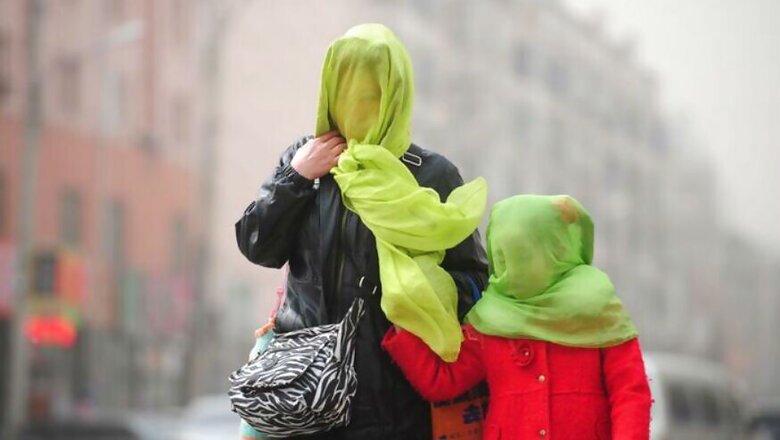
views
New York: As many as 220 million children in South Asia region, including India, among nearly 300 million globally, currently live in areas where outdoor air pollution exceeds international guidelines by at least six times, according to a new report released by UNICEF on Monday.
The study — Clear the Air for Children — based on satellite imagery, in the first analysis of its kind, has categorised the affected areas based on the quantum of particulate matter, ranging from 10 to 60 g/m3 (the amount of micrograms of ultra-fine particulate matter per cubic metre of air that constitutes a long term hazard).
"Around 300 million children currently live in areas where the air is toxic exceeding international limits by at least six times. In total, around 2 billion children live in areas that exceed the World Health Organisation annual limit of 10 g/m3," the report says.
Of the 300 million global figure for PM 2.5 annual mean exceeding 60 g/m3, 220 million children belong to South Asia region, which includes India and neighbouring countries.
For the 2 billion figure which corresponds to the ultra-fine particulate matter exceeding 10 g/m3, 620 million children are affected by it in South Asia, the report said.
Nearly 450 million children breathing toxic air in East Asia and the Pacific region, 200 million in Eastern and Southern Africa and 240 million in West and Central Africa for the 10 g/m3 category, it added.
"The sheer numbers of children affected are staggering... Many of these children are already disadvantaged by poverty and deprivation. Some are already at heightened risk from conflicts, crises and the intensifying effects of climate change," UNICEF Executive Director, Anthony Lake says in the report.
The findings come a week ahead of the COP 22 in Marrakesh, Morocco, where UNICEF is calling on world leaders to take urgent action to cut air pollution in their countries.
"The impact is commensurately shocking. Every year, nearly 600,000 children under the age of five die from diseases caused or exacerbated by the effects of indoor and outdoor air pollution," Lake says.
"Millions more suffer from respiratory diseases that diminish their resilience and affect their physical and cognitive development," Lake says. Globally, air pollution affects children in low-income and middle-income countries more.
According to a recent WHO report, Delhi was ranked among the top 20 cities worst-affected by pollution globally.
"The effects of indoor air pollution kill more children globally than outdoor air pollution, especially in Africa and Asia. Eighteen of the nineteen countries where 95 per cent or more of the population use solid fuels for cooking are in sub-Saharan Africa.
"More than 60 per cent of the population in India continue to use solid fuels in household cooking contributing to over 100,000 child deaths associated with indoor air pollution in 2012," the reports says.




















Comments
0 comment